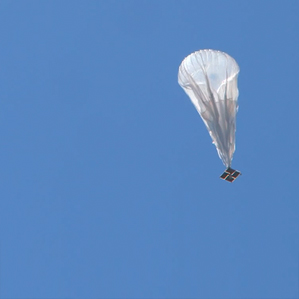 |
| High flyer: Google has begun testing its high-altitude balloons. |
For one thing, the service would only provide 3G connectivity, meaning that it would need to compete with cellular networks that are expanding and becoming ever cheaper to use. “In Kenya, most parts of the country have 3G access,” says Phares Kariuki, previously a technology consultant to the World Bank, who now leads an effort to build a supercomputing cluster at iHub, the tech startup space in Nairobi.
And even if Google managed to deliver faster speeds from future balloon fleets, they’d be solving the wrong problem, Kariuki adds: “The barrier to Internet adoption is not so much the lack of connectivity. It’s the high cost of the equipment.” People in poor areas simply can’t afford laptops and smartphones, Kariuki says, and generally prefer cheap feature phones.
Google’s Loon project manager, Mike Cassidy, says that even if some countries like Kenya have substantial 3G coverage, many others don’t. “We don’t think there is any one solution or one company that will have a solution for the whole world,” he says. “We just think that from what we’ve seen, there are huge swaths of people who don’t have connectivity.”
 |
| Solar signals: Each balloon has a solar-powered transceiver at its base. |
The idea comes with practical problems. All nations tightly regulate, and some ban, transits of their airspace; but balloon routes can’t be easily controlled (though Google says it can control elevation and then catch different wind currents).
Jackson Hungu, who leads mobile health technology development as deputy country director for the Clinton Health Access Initiative in Kenya (see “Kenya’s Startup Boom”), suggested that Google might add some value from its adaptation of weather balloons if it actually delivered weather information along the way. “If it is just going to deliver Internet to a few guys in the wilderness, fine,” he says. “But if it can be part of this big data phenomenon, and deliver useful data from the Great Rift Valley, which delivers food security to the nation – then maybe it begins to make some more sense.”
Cassidy said that while the balloons would be flying well above the weather, they could indeed collect data on stratospheric wind conditions—which play a role in weather patterns such as storm tracks—and send them down to earth.
Kariuki noted another scenario under which the concept might make sense. Kenya is slated to receive free laptops for every seven-year-old child starting next year, from the One Laptop per Child philanthropic organization. If balloons could hover over certain countries and provide free Internet service as part of the effort, it would complement the project.
Kariuki questions whether there could be a working business model for the concept. “Even if this works, we know that the existence of a technology and its actual use and adoption are two different things,” he says.
Meanwhile, other solutions for filling the sort of gap Google proposes to address are emerging. These include low-power base stations that can operate on 50 watts of solar power, and bring connectivity to 1,000 people (see “A Tiny Cell Phone Transmitter Takes Root in Rural Africa”). In such cases, there is both a ready market and a technology custom-designed to efficiently serve it.
Google has a history of nurturing far-out projects. But even if the technology itself deflates, the balloon effort may have an impact as a tool for public relations. “I personally think it’s like Richard Branson flying a balloon around the world. It’s a marketing gimmick more than a technology that will really work,” says Jimmy Gitonga, the manager of iHub. “I honestly don’t take this too seriously; what Google probably wants to do is make sure the Google brand gains mindshare.”
Source: MIT Technology Review
No comments:
Post a Comment